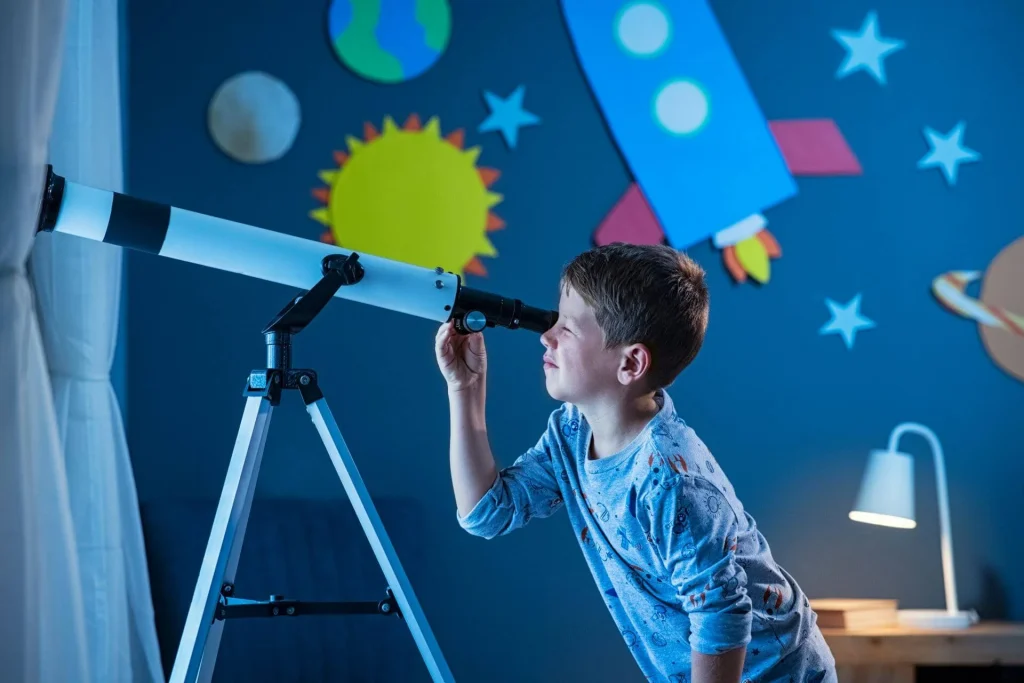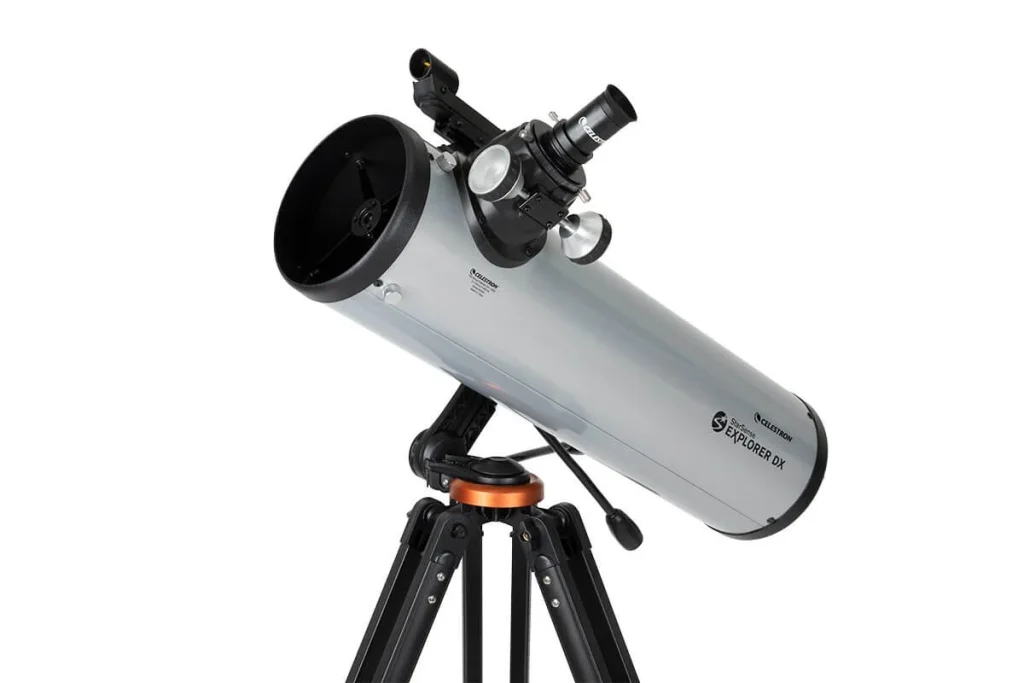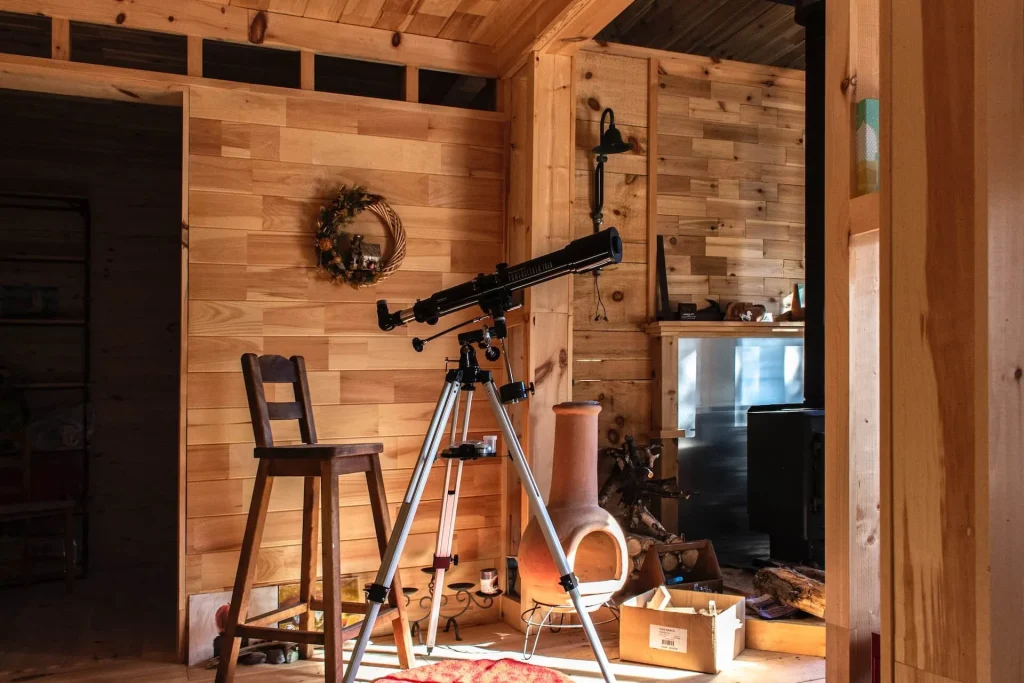The universe has never seemed closer or more fascinating than it does in the age of infinite knowledge and inquiry. Conversations about cosmic phenomena, alien civilizations, and the mysteries of space have recently piqued people’s curiosity all across the world. Perhaps, like many others, you became fascinated with these celestial subjects as a result of the incredible discoveries and searches that span the enormous expanse of our universe.
After a number of thrilling documentaries, interesting articles, and incredible space movies, you possibly found yourself starting to explore the complex framework of universal wonders that envelops the planet with a newfound interest in events relating to space. This growing interest has somehow sparked a desire to set out on an adventure of personal exploration, one that begins with a simple but significant investment—a stargazing telescope for your condo in Tagaytay.
In light of this, President Ferdinand “Bongbong” Marcos Jr.’s recent declaration has taken this newly found interest to new levels. With the declaration of August 8–14 as “Philippine Space Week,” our country is gearing up to further improve its appreciation as well as an understanding of space, hoping to spark interest and awareness among Filipinos. The idea couldn’t have come at a better time, as everyone’s attention is currently on the celestial void above us.
This article will simply go over the factors to take into account before starting a telescopic investment in your condo in Tagaytay.

What Is a Telescope?
According to NASA Space Place, a telescope is an object that astronomers use to see deep-sky objects in the sky. Curved mirrors are used by the majority of telescopes, including all large telescopes, to collect and concentrate light from the night sky.
The telescope may gather more light if its mirrors or lenses are larger. The shape of the optics then concentrates light. When we gaze through the telescope, that light is what we see.
Types of Telescopes and Their Differences:
Refractors and reflector telescopes are the two most popular choices for beginners.
Refractors are typically low maintenance, but as the aperture grows, the cost climbs quickly. Overall, there are two lenses in a refractor telescope. The observer’s seeing lens, also known as the “ocular” or “eyepiece,” is at one end and the larger of the two, known as the “objective,” is at the other. These were the earliest known sort of telescope, and a Dutch lensmaker named Hans Lippershey is credited with creating them in 1608.
On the other hand, the “primary,” a concave mirror used by a reflector telescope to gather light, is capable of focusing light in a variety of ways, which determines the type of reflecting telescope. This type of telescope is occasionally referred to as Newtonian telescope after its creator Isaac Newton, who constructed the first one in 1668.
Compact tubes and comparatively lightweight are the typical characteristics of compound (or catadioptric) telescopes, which combine lenses and mirrors; the two most common models are Schmidt-Cassegrain and Maksutov-Cassegrain.

Other Things You Should Know About Telescopes:
Aperture size
The diameter of the objective lens or mirror of a reflector, respectively, is referred to as the aperture of a telescope. The aperture size is the real indicator of a telescope’s “power” because it directly correlates with the instrument’s capacity to gather light. Additionally, an observer will see a better image if a scope can collect more light.
Focal ratio
By dividing a telescope’s focal length by its aperture size, the focal ratio of the instrument is determined. The distance from the primary lens (or mirror) to where the light converges to focus is known as the focal length.
Telescope mount
There are two types of mounts that are typically used for telescopes:
In order to keep your telescope stable and make it easier for you to point and move it, it is crucial to have an easy-to-set-up and a solid telescope mount (or support). Keep in mind that the stars are constantly moving across the sky and that they rise in the East and set in the West.
- Alt azimuth mounts position the telescope with easy up-and-down (altitude) and side-to-side (azimuth) adjustments. Even so, this telescope must be moved in both directions in order to track the motion of the stars.
- Equatorial mounts have a little more complexity due to the rotational basis of their movements. However, they are easily fitted with motors that will move the telescope automatically to counterbalance the rotation of the Earth and maintain an object in view for extended periods of time. They can also track the stars across the sky with a single movement.

When Is the Best Time to Buy a Telescope?
Indeed, any skywatcher can observe magnified images of celestial objects with telescopes. However, to avoid any regrets—it is an appropriate decision to consider whether now is a good time to purchase your first telescope before you take any action.
When people first get interested in astronomy, they frequently desire to purchase the best telescopes. After all, they can’t wait to start their new fascination, get clear views of the night sky, and learn more about the cosmos. It might not always be the most ideal choice, though.
Before visiting a store, it will be wise to educate yourself first on the night sky before diving in, particularly on how to recognize the constellations, the kinds of objects you can view, and (most importantly) how to find them. You should do your homework, become familiar with the jargon, and think about your needs because a telescope is a long-term investment.

Photo from bintel.com.au
How Do I Choose the Right Telescope?
It’s relatively easy to become intrigued by the idea of a brand-new telescope for your condo in Tagaytay, and you can forget to consider how useful it will actually be for your way of life. But if you have a basic understanding of the various telescope sizes, types, and mounts, it will be much easier to buy a telescope in the price range that you will use the most.
There is no perfect or “best” telescope. Your personal needs will determine which telescope you choose. The cost, portability, and usability are factors to take into consideration. You must particularly consider your telescope’s intended use.
If you’re looking for a good “first telescope”, investing in a nice pair of binoculars can serve as a great starting point. Compared to a refracting telescope, binoculars are smaller and easy to use. They are portable and can view five to ten times more stars than the naked eye and the four largest moons of Jupiter in astounding detail. As a matter of fact, binoculars are often preferable to a telescope for seeing astronomical objects like comets and star clusters. You can determine the magnification and lens size from the numbers on the binoculars.
For the price of a substandard telescope, high-quality binoculars offer superior optics.

Notes You Should Consider When Buying Your First Telescope:
Aperture. When picking a telescope, the aperture—or the diameter of its primary mirror or lens—should be your top priority. Although magnification is a quality you may frequently see highlighted, a telescope’s aperture is far more important. The telescope can view fainter objects and can reveal more detail on nearby, bright objects like the moon’s larger diameter.
Telescope size. You’ll need something bigger than 4 or 5 inches if you want to take your stargazing to the next level and see dimmer deep-sky phenomena. But you should think about how convenient it would be to use a large telescope on a regular basis before buying the biggest telescope you can afford in order to be able to see more objects.
Cost. This factor is a frequent, significant consideration when attempting to buy a telescope. Due to the lower cost of manufacturing mirrors compared to lenses, reflectors are generally less expensive than refractors of the same size. Refractors, however, typically deliver slightly crisper images than reflectors. Refractors are frequently preferred by beginners in astronomy who enjoy viewing fine details on planets, whereas reflectors are preferred by those who enjoy viewing faint deep-sky objects.
Budget. Telescopes are similar to other products in that you get what you pay for. It’s almost guaranteed that buying a cheap department shop scope is a waste of money. This is not mean that you should spend all of your money—the majority of people do not require a really pricey scope. However, it’s crucial to avoid low-cost offers from shops that don’t specialize in scopes and will provide you with a poor viewing experience. Choosing the best option within your price range should be your plan.
Last but not least, keep in mind that long exposure periods are necessary if you want to take pictures of astronomical objects. A telescope with a reliable equatorial mount and a motor drive to ‘trace’ the stars is necessary for taking good astrophotography. This will guarantee that the photo’s subject stays in the middle of the frame.
Read more: 5 Adventures to Try with Your Kids On The Weekend


